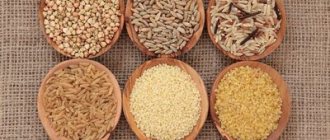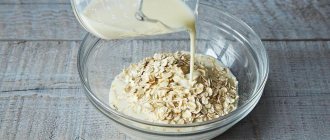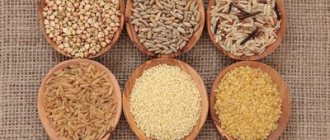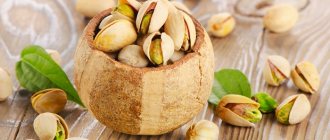- 17.09.2017
- Glycemic index, Health, Nutrition, Articles, Explanatory
Any carbohydrate-containing product has a glycemic index (for convenience, GI). This indicator characterizes an important property - the rate of increase in blood glucose, which directly affects the process of obesity. Eating foods with a high GI means a rapid increase in sugar, while the pancreas actively secretes insulin. The hormone distributes glucose throughout the body, which leads to fat deposits. For those who want to keep their figure toned, it is important to know the glycemic index of an apple.
Glycemic index of apple
Apple, a delicious and crunchy fruit packed with tons of nutrients and antioxidants, is a popular choice among health and fitness enthusiasts. A food's GI is a ranking of carbohydrate foods based on a 100-point scale based on the degree to which they raise blood sugar levels after eating.
Not only is the apple a low-calorie fruit, but it also has a low GI value: the glycemic index of an apple ranges from 32 to 38, meaning that it does not immediately raise your blood sugar levels.
GI of vegetables
Vegetables, due to their rich chemical composition and the presence of fiber, are included in dietary programs and diets for diabetes. However, when drawing up a nutrition plan, the calorie content of foods, the absence of individual intolerance, and the size of permitted portions are taken into account.
Raw vegetable crops have a low GI; after heat treatment (baking, boiling), the indicator increases.
Is apple good for diabetics?
Since apple has a low glycemic index (GI) and low glycemic load, it is a diabetes-friendly fruit and is suitable for treating diabetes as it has a low effect on the blood.
Green apples contain less sugar and more fiber and thus outweigh blood sugar spikes to worry about; are especially useful in reducing the risk of developing type 2 diabetes. They also have high levels of antioxidants and are an excellent source of vitamin C, and also contain about 20g of carbohydrates to provide all of our energy, most of which comes from natural sugars. Additionally, green apple has a glycemic index of 39, which means it is a low glycemic food.
Grab one green apple in your lunch box and leave the skin on as it is the most nutritious part, full of antioxidants. However, portion sizes remain important for diabetics. Eating too many apples at once can cause your blood sugar levels to spike, so just grab one medium-sized apple instead of a large one. Also, avoid dipping it in peanut butter, chocolate or caramel sauce. You can also use low-sugar fruits such as green apple and berries to make a smoothie; The apple can also be combined with various other foods, such as low-fat yogurt or skim milk, to reduce the overall glycemic load of the recipe.
Useful properties of apple
Red apples
The apple is rightfully considered the most ancient and frequently eaten fruit. As you know, the story of the Fall begins with him. Adam first tasted the apple, and the folk tale about rejuvenating apples is so popular in Russia. All this indicates the great popularity and unique benefits of the fruit.
From an early age, everyone knows about a rich set of vitamins and minerals. An apple contains a significant amount of vitamins: A, P, PP, C, K, H, group B. Minerals are presented in the composition: iron, zinc, calcium, magnesium, phosphorus, potassium, manganese, fluorine. It is impossible not to note the high content of pectin, which helps digestion. Fruit fiber perfectly cleanses the body of harmful compounds.
Main qualities of an apple:
Many apples of different types
- cleansing and choleretic effect;
- strengthening the immune system;
- reducing bad cholesterol levels;
- strengthening blood vessels and heart muscle;
- prevention of osteoporosis during postmenopause;
- improved digestion and increased appetite;
- helps reduce weight and speed up metabolism;
- antioxidants prevent the growth of cancer cells;
- prevention of anemia.
Glycemic index of red apple
Despite the constant debate between which apples are better - green or red, each of them has a whole treasury of useful vitamins and microelements. But, if we talk about the glycemic index of a red apple, it is somewhat different from that of green apples, and varies from 30 to 39, although a more accurate sugar content can be determined by knowing the grade and weight of the fruit.
Apples do contain sugar, but most of it is fructose: when fructose is consumed in whole fruit, it has very little effect on blood sugar levels. Additionally, the fiber in apples slows down the digestion and absorption of sugar, meaning that sugar enters the bloodstream slowly and does not quickly raise blood levels; Polyphenols, which are plant compounds found in apples, also slow down the digestion of carbohydrates and lower blood sugar levels.
Table of foods with average GI - from 50 to 69
| Name | Glycemic index |
| Apple juice | 50 |
| Persimmon | 50 |
| Brown brown rice | 50 |
| Pineapple juice | 50 |
| Mango | 50 |
| Kiwi | 50 |
| Cranberry juice | 50 |
| Canned Peaches | 55 |
| Sushi | 55 |
| Bulgur | 55 |
| Spaghetti | 55 |
| Grape juice | 55 |
| Potato sweet potato | 55 |
| Canned corn | 57 |
| Papaya | 59 |
| Cocoa | 60 |
| Oatmeal | 60 |
| Melon | 60 |
| Lasagna | 60 |
| Rice | 60 |
| Banana | 60 |
| Sprouted wheat | 63 |
| Canned vegetables | 65 |
| Whole wheat bread | 65 |
| Sorbent | 65 |
| Jacket potatoes | 65 |
| Rye bread | 65 |
| Raisin | 65 |
| Canned pineapple | 65 |
| Muesli | 65 |
| Marmalade | 65 |
| Black bread | 65 |
| Boiled beets | 65 |
| Cereals | 66 |
| Wheat flour | 69 |
Apples may reduce insulin resistance
There are two types of diabetes - type 1 and type 2:
- in the case of type 1 diabetes, the pancreas does not produce enough insulin, the hormone that transports sugar from the blood into cells;
- In type 2 diabetes, the body produces insulin, but the cells are resistant to it - this is called insulin resistance.
Eating apples regularly can reduce insulin resistance, which should lead to lower blood sugar levels. This is because the polyphenols in apples, primarily found in the apple peel, stimulate the pancreas to release insulin and help cells metabolize sugar.
Diet or lifestyle
Table 9 is a developed, balanced nutritional complex for diabetics of type 2 disease.
Low-fat fermented milk products, cereals, herbal teas, and sour citrus fruits (lemon, grapefruit) are allowed. Small portions, frequent meals.
Freshly squeezed juices are contraindicated. Fresh juice is a difficult product for the pancreas; it is quickly absorbed, which immediately provokes a rise in glucose.
When drawing up the menu, the permissible calorie intake and the patient’s life pace are taken into account. Following a healthy diet requires strict self-control and endurance. Not everyone will find this task easy. In order to avoid gastronomic breakdowns, food should be varied. The monotonous eating of cereals, light soups, and steamed cutlets quickly gets boring.
Fruits, dairy products, baked vegetables, poultry, salads - make it possible to eat healthy, healthy, and tasty. The variety of recipes allows you to take into account the patient’s taste priorities, while excluding prohibited foods and maintaining the required calorie content.
People with excess body weight and a sedentary lifestyle are prescribed from 1200 to 2200 kilocalories in the daily diet. Because more substances will contribute to new fat deposits, and this is not acceptable.
Antioxidants contained in apples reduce the risk of diabetes
Several studies have shown that eating apples is associated with a lower risk of diabetes: one study found that women who ate an apple a day had a 28% lower risk of developing type 2 diabetes than women who did not eat apples.
There are many reasons why apples can help prevent diabetes, but the antioxidants contained in apples play a significant role.
Apples contain significant amounts of the following antioxidants:
- Quercetin: Slows the digestion of carbohydrates, helping prevent blood sugar spikes.
- Chlorogenic Acid: Helps your body use sugar more efficiently.
- Chlorizin: slows down the absorption of sugar and lowers blood sugar levels.
The highest concentrations of beneficial antioxidants are found in red apples.
Golden and Granny Smith
Granny Smith apples have a GI value of about 40-47 units, and the calorie content per 100 g is low - 40-50 kcal. Green fruits are distinguished by juicy pulp with a dense structure, the taste is sourish-sweet. The sugar concentration in apples is low.
The fruits are used fresh for making salads and smoothies. To include in the diet for diabetes, low-calorie desserts should be chosen. Granny Smith fruits are 87% water, retaining vitamin and mineral complexes. Fruits are optimal for dietary and fasting programs.
The index of the Gala variety is 40-45 units. The calorie content is low - 53-56 kcal per 100 g. The fruit can be included in the diet for diabetes mellitus in small portions, fresh or after a short heat treatment. The taste of the dense pulp is moderately sweet with sour notes and a hint of vanilla.
The product contains a high concentration of fiber, carbohydrate compounds, and no fats or proteins. Gala apples are used to make smoothies, cottage cheese casseroles with dried fruits and spices.
Golden apples have a calorie content of up to 53 kcal per 100 g, and the GI index is low - about 40 units. The fruits contain more than 50% water, minerals, and vitamins. A high concentration of carotene improves the condition of hair, nails, and teeth. The iodine contained in the fruits of the Golden variety helps improve the condition of the thyroid gland. This variety of fruit crop is distinguished by a high concentration of antioxidants, which trigger rejuvenation processes in cells that improve metabolism.
Glycemic index of baked apple
Both baked and fresh apples are healthy, but baked ones may be especially beneficial for gut health.
By eating fresh, we benefit from nutrients such as vitamin C and potassium, and may even enjoy improved overall health, as eating apples has been linked to a reduced risk of heart disease, asthma and type 2 diabetes.
Despite the same glycemic index of a baked apple as a fresh one, this dish has an additional benefit: pectin, which heals the intestines. This special form of fiber is released during the baking process, and new evidence suggests it may help repair and maintain the intestinal lining. One animal study found that pectin may help:
- modulate gut bacteria
- get rid of toxins in the intestines
- reduce inflammation.
Although pectin is present in fresh apples, its effect is more pronounced when the apples are baked. Determine that gut-healing levels of pectin are released when baked apples take on a gel-like sheen.
Table of foods with high GI - over 70
| The product's name | Glycemic index |
| Semolina | 70 |
| Couscous | 70 |
| Risotto | 70 |
| Chips | 70 |
| Pearl barley | 70 |
| Noodles | 70 |
| Croissant | 70 |
| Carbonated drinks | 70 |
| Chocolate bars | 70 |
| Milk chocolate | 70 |
| Millet | 71 |
| Waffles | 75 |
| Lasagna | 75 |
| Rice porrige | 75 |
| French baguette | 75 |
| Watermelon | 75 |
| Pumpkin | 75 |
| Donuts | 76 |
| Muesli with nuts | 80 |
| Crackers | 80 |
| Mashed potatoes | 83 |
| Rice pudding with milk | 85 |
| Popcorn | 85 |
| Cornflakes | 85 |
| Boiled carrots | 85 |
| White rice | 90 |
| White bread gluten free | 90 |
| Canned apricots | 91 |
| Rice noodles | 92 |
| Potato casserole | 95 |
| Fried potatoes | 95 |
| Baked potato | 95 |
| Butter buns | 95 |
| Swede | 99 |
| Starch | 100 |
| Glucose | 100 |
| White bread | 100 |
| Dates | 103 |
| Beer | 110 |










